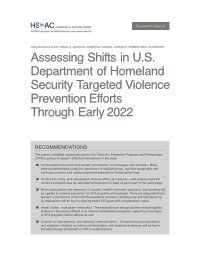By The Caddo Parish Task Force
For decades, the Caddo Correctional Center (CCC) in Shreveport, Louisiana has experienced severe overcrowding – at times housing several hundreds of individuals beyond the 1,070 the facility was originally constructed to hold. The overcapacity issue at the jail began in earnest after Hurricane Katrina devastated the southeast region of the state in 2005, requiring several northern jails, including the CCC, to hold displaced detainees in addition to local populations. As a result, the CCC’s operational capacity was expanded to 1,500 despite no space being added. More than 18 years later, the jail population has yet to return to its pre-emergency level. This chronic overcrowding has contributed to severe staffing shortages at the CCC, threats to safety for both staff and individuals in custody, Parish resource depletion, and substantial pressure on other parts of the system, including law enforcement agencies, district attorneys, public defenders, and the district court. In September 2022, the Sheriff of Caddo Parish called for collective action among Parish stakeholders to address the urgency of the CCC’s overcrowding. In November, the Sheriff, among other leaders in Caddo Parish requested technical assistance through the Justice Reinvestment Initiative (JRI) grant funded by the Bureau of Justice Assistance (BJA), a component of the Department of Justice’s Office of Justice Programs. JRI is an intensive, data-driven approach that allows jurisdictions to address key challenges in their criminal justice systems. The purpose of the request for technical assistance was to use comprehensive data and system analyses to identify points of congestion within the system that contribute to the ongoing overcrowding and consider both short-term and long-term solutions to relieve pressure on the jail. To oversee this effort, the Parish formed the Caddo Parish Criminal Justice Task Force (“Task Force”), composed of representatives from key criminal justice agencies and partners in the Parish, including the Caddo Parish District Attorney, the Caddo Parish Public Defender’s Office, the Parish Administration, the Caddo Parish Sheriff’s Office (CPSO) and CCC staff, the Shreveport Police Department (SPD), the First Judicial District Court, and the Greater Shreveport Chamber of Commerce. From March to August 2023, the Task Force met four times to review analyses of jail and court data from 11 prior years (2012- 2022) and discuss potential policy solutions. CPSO provided data from the CCC, and the First Judicial District Court provided the court data. The Crime and Justice Institute (CJI) analyzed and presented all data provided with consultation by the respective agencies.
Boston: Crime and Justice Institute, 2023. 36p.





















